MQTT is Used in IoT

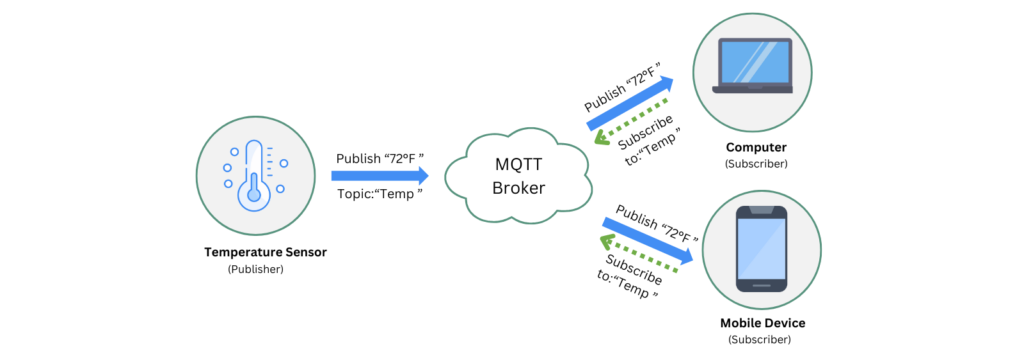
Introduction to MQTT
MQTT (Message Queuing Telemetry Transport) is a lightweight and efficient messaging protocol designed to facilitate communication between devices in environments where resources are constrained and network bandwidth is limited. Its simplicity and reliability make it an ideal choice for IoT applications across various industries.
Key Advantages of MQTT in IoT
1. Lightweight and Efficient
- Minimal Overhead: With a small header size, MQTT reduces the amount of data needed to communicate, conserving bandwidth and processing power.
- Low Power Consumption: Ideal for battery-operated devices that require long operational periods without frequent recharging.
2. Publish/Subscribe Model
- Decoupled Communication: Devices can publish messages to a broker, which then distributes them to subscribers. This allows for scalable systems where devices do not need direct communication links.
- Scalability: Supports dynamic network topologies, making it easy to add or remove devices without affecting the entire system.
3. Reliability and Quality of Service (QoS)
- Three Levels of QoS: MQTT offers flexible levels of message delivery guarantees, ensuring messages are delivered according to the specific needs of the application:
- QoS 0: At most once
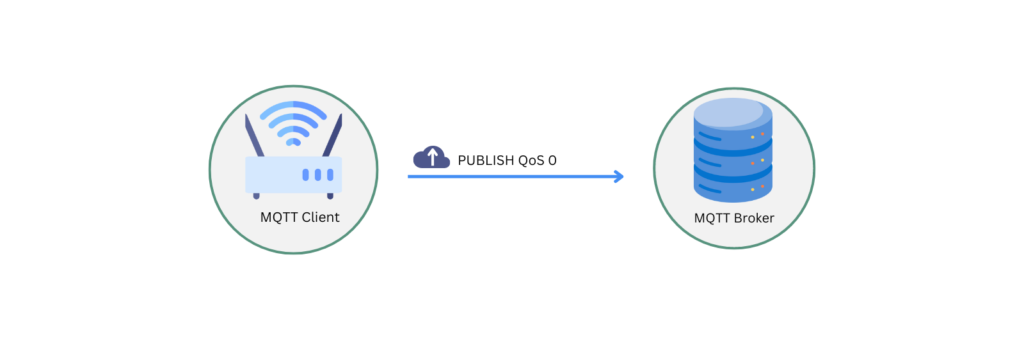
- QoS 1: At least once
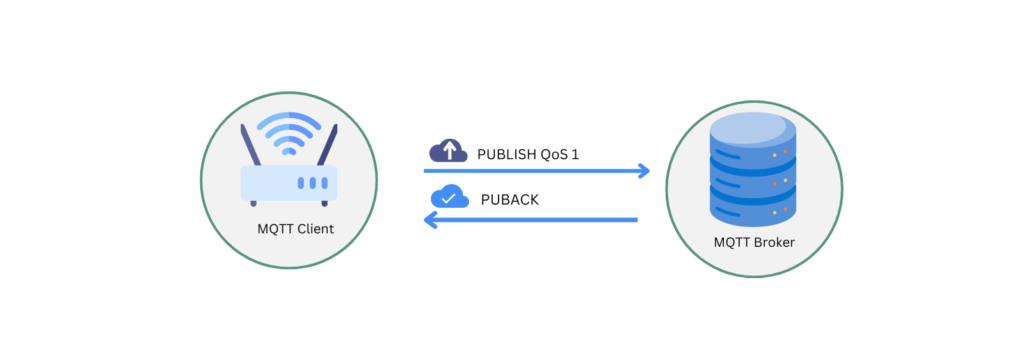
- QoS 2: Exactly once
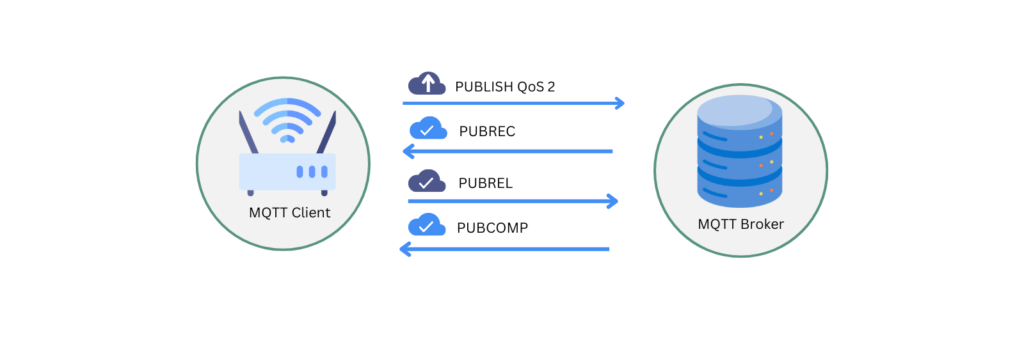
- Reliable Communication: These options ensure that messages are delivered reliably, even in environments with intermittent connectivity.
4. Support for Intermittent Connectivity
- Offline Capabilities: Devices can operate independently and reconnect when a network is available, reducing data loss and ensuring continuity.
- Retained Messages: MQTT allows for messages to be stored and sent to new subscribers, ensuring they receive the latest data.
5. Security Features
- Authentication and Encryption: MQTT supports mechanisms for secure data transmission, including username/password authentication and SSL/TLS encryption.
- Access Control: Enables the implementation of access control policies to restrict which devices can publish or subscribe to topics.
6. Cross-Platform Support
- Compatibility: Supported across a wide range of platforms, from microcontrollers to smartphones and desktops, facilitating diverse IoT applications.
- Open-Source Libraries: Numerous libraries and tools are available, accelerating development and deployment.
7. Ease of Implementation
- Simple Protocol: The simplicity of MQTT allows for rapid prototyping and deployment, making it accessible to developers with varying levels of expertise.
- Community Support: A large community provides extensive resources, documentation, and support for troubleshooting.
How MQTT Works in IoT
The following diagram illustrates the basic architecture of an MQTT-based IoT system:

Figure: MQTT Architecture
Explanation:
- MQTT Broker: Acts as a central hub through which all messages are passed. It receives messages from publishing clients and routes them to subscribing clients.
- Publishing Clients: Devices or applications that send data to the broker. They publish messages to specific topics.
- Subscribing Clients: Devices or applications that receive data from the broker. They subscribe to specific topics to receive relevant messages.
- Topics: A hierarchical structure used by MQTT to organize messages. Clients publish and subscribe to topics to send and receive data.
How to Register IoT Devices with MQTT
Device registration in an MQTT-based IoT system typically involves the following steps:
1. Device Provisioning
- Unique Identification: Assign each device a unique identifier (ID) that will be used for tracking and communication.
- Credentials Assignment: Generate and assign security credentials, such as username/password or certificates, for authentication.
2. Device Configuration
- MQTT Broker Details: Configure the device with the broker’s address, port, and connection settings (e.g., use of SSL/TLS).
- Topic Subscription: Specify the topics the device should subscribe to and publish on, based on its role and functionality.
3. Connection Establishment
- Connect to Broker: Use the device’s credentials to authenticate and establish a connection with the MQTT broker.
- Session Management: Implement session management features to handle disconnections and reconnections smoothly.
4. Registration Protocol
- Initial Registration Message: Upon first connection, the device can publish a registration message to a specific topic, informing the broker and other systems of its presence and capabilities.
- Broker Acknowledgement: The broker or a backend system may respond with an acknowledgment or additional configuration details.
5. Monitoring and Management
- Heartbeat Messages: Devices can periodically send status messages to indicate their operational status.
- Remote Configuration: Enable remote configuration capabilities to update device settings as needed without manual intervention.
Example: Home Automation System with MQTT
Scenario: A smart home system where various IoT devices (e.g., lights, thermostats, security cameras) are connected and managed using MQTT.
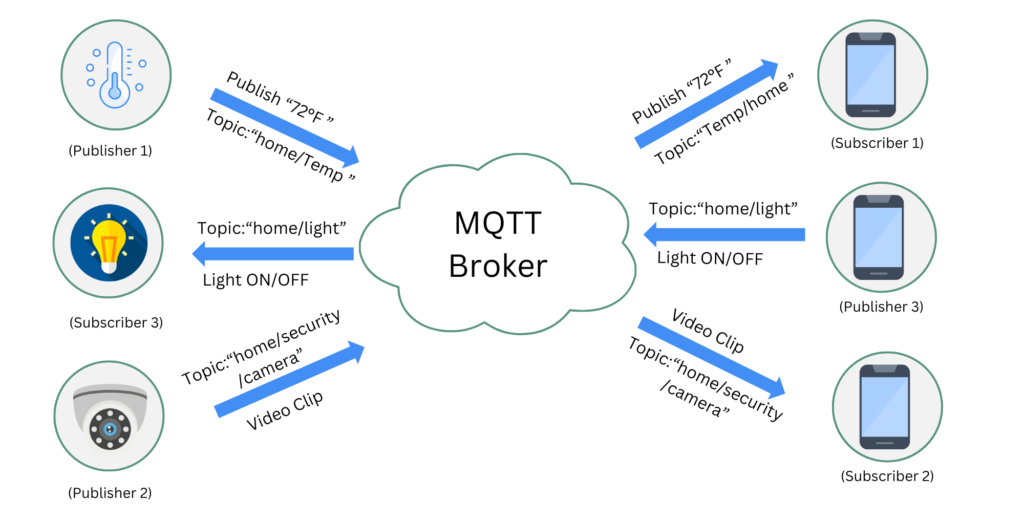
1. Device Setup:
- Each device is provisioned with a unique ID and security credentials.
- Devices are configured with MQTT broker details and subscribe to relevant topics (e.g., /home/lights, /home/security/camera).
2. Communication:
- Devices publish messages to report status or changes (e.g., light turned on, temperature check).
- The MQTT broker relays these messages to subscribed devices or applications, such as a mobile app for home monitoring.
3. Control and Monitoring:
- Users can control devices via a mobile app that publishes commands to topics (e.g., /home/lights/command).
- Devices receive commands and update their states accordingly.
4. Integration and Expansion:
- New devices can be added seamlessly by provisioning them with IDs and credentials, then subscribing to the appropriate topics.
The system scales easily as the home network grows.
Conclusion
At Ioscape, we leverage MQTT to build robust IoT solutions that cater to diverse industry needs. Our expertise in IoT technology ensures that we deliver scalable, efficient, and secure systems that enhance connectivity and automation. By integrating MQTT into our IoT platforms, we enable seamless communication between devices, driving innovation and efficiency in IoT ecosystems.